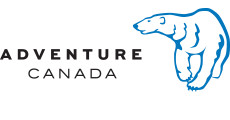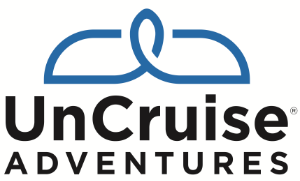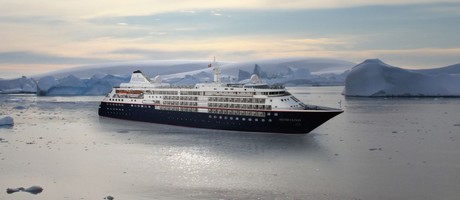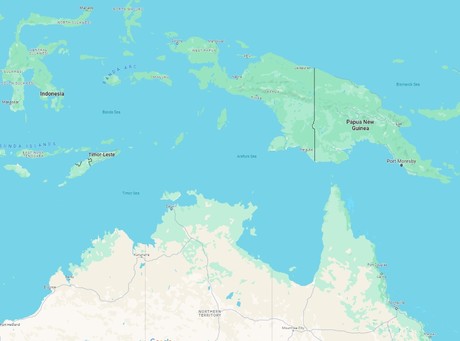Fremantle to Lautoka - Western Australia & Melanesia Luxury Cruise
Explore some of the most fascinating and far-flung places on the planet as we sail from Fremantle to Lautoka. Look out for Sea lions and Tammar Wallabies during two days in the Abrolhos Islands, discover Cape Peron, Montebello Islands, and Rowley Shoals. Witness the breath-taking Kimberley region as our expedition team lead you to Adele Island, Talbot Bay, Montgomery Reef, Hunter River, and Ashmore Reef. See rare wildlife and stunning natural beauty.
Highlights
Abrolhos Islands Excursion: Explore the picturesque Abrolhos Islands with a full-day excursion, offering a unique opportunity to discover the natural beauty and marine life of Western Australia.
Cultural Experience in Ambrym Island, Vanuatu: Immerse yourself in the magic of Ambrym Island, known for its volcanically active landscape. Witness a traditional 'Rom' dance in the lush greenery of Ranon, providing insight into the island's rich cultural heritage.
Champagne Beach, Vanuatu: Enjoy a day at the stunning Champagne Beach in Vanuatu, known for its white sand and clear blue waters. Take in the natural beauty and relax in this tropical paradise.
Coming in at number seven on Lonely Planet’s list of best places to live, Fremantle has finally begun to shake off the shadow of neighbouring big brother Perth. With just 20 kilometres separating the two cities, Perth, with its happy hippie vibe has long been the big pull for visitors to the region. But Fremantle’s colourful past and bright future gives Perth as good as it gets. The coastal city has undergone a complete revamp since the America’s Cup thrust Fremantle into the spotlight in 1987. Over AUS$ 1,3 billion has been poured into revamping the city, and the fruits of the city’s labour are ripe for picking. Investment in the arts has brought Fremantle to the fore of thriving urban culture, while generous grants for small businesses has led to groovy live-music rooms, hipster bars, boutique hotels, left-field bookshops, craft-beer breweries, Indian Ocean seafood shacks amid the buskers and beaches. If that doesn’t not sound like your glass of beer, we guarantee a stroll along the wooden riverside walkway will change your mind. The city also enjoys another, rather different status. Fremantle was one of Australia’s penal cities, vestiges of which can still be found in Fremantle Prison. Almost 10,000 convicts were condemned to life imprisonment here between 1850 and 1868, but the prison remained in use until 1991. Today, the memorable sandstone building is a UNESCO World Heritage Site and at just 15 minutes from port is well worth a visit. Just don’t forget your get out of jail free card.
Human drama and nature rival each other to be the most fascinating drawcards of the Houtman Abrolhos or Abrolhos Islands. In 1629 the Dutch ship Batavia was wrecked, with most crew and passengers reaching dry inhospitable Beacon Island. Thus, began a horror story of mutiny, betrayal, rape, murder of children and survival. On one island, soldiers built a stone stockade which is the first European structure in Australia. Eventually the remaining survivors were rescued, and the murderers were hung on one island or marooned on the mainland (Australia’s first European settlers). A century later, desperate survivors of another wrecked Dutch ship Zeewijk lived (or died) for ten months on the islands. Life in the sea is an unusual mix. The warm southward-flowing Leeuwin Current meets cool southern waters at Abrolhos creating homes for both tropical and temperate marine life. A diverse coral reef grows beside cool water algae. Two thirds of the 400 fish species are tropical, while cool water-favouring Australian Sea-lions and Western Rock Lobsters (Australia’s most valuable fishery) are close to their northern limit. Seabirds, like the cooler climate Pacific Gulls, mix with tropical species like Bridled and Roseate Terns. The only colony of the Australian Lesser Noddy breeds here, along with two million Wedge-tailed Shearwaters. On land, amongst the Nitre shrubs and Saltbushes, are Abrolhos Painted Quails and Dwarf Bearded Dragons and shy Tammar Wallabies. Their ancestors survived the hungry castaways.
Shark Bay is Australia’s largest bay, with a beach stretching over 1,000 kilometers. François Peron National Park lies within the Shark Bay World Heritage area and adjacent to the Shark Bay Marine Park. This is where the rust-red desert sand meets the dazzling white-sand beach and the azure waters of the sea. At the northerly tip of the national park is Cape Peron, sitting at the confluence of two major currents, the cape attracts an impressive array of marine life. Take a hike with the expedition team from Cape Peron to the Skipjack Point viewing platforms, perched on the cliff edge with views out across the marine park. Alternatively, join the expedition team for an interpretive nature walk through the impressive landscape of acacia-cloaked red dunes and arid shrublands surrounded by turquoise water with views over the coastline.
A spectacular collision of colour spills across the seabed around North Muiron Island - which has to be one of the best spots in the world for snorkelling and scuba diving. Immerse yourself in this underwater universe as tiny fish flit between the corals, and elegant rays sweep gracefully past. Sitting off the North West Cape, the two utterly unspoiled Muiron Islands are part of the UNESCO World Heritage Site listed Ningaloo Coast. Warm Indian Ocean waters collide with the cooler waters of the West Australian Current here, forming a remarkable biological hot spot that thrives with rich life and incredible diversity. These unique conditions form masses of plankton for gentle giants of the ocean to graze upon - even luring groups of the ocean’s biggest fish - colossal whale sharks. From March to July, the cows of the sea carefully vacuum the sea bed for their food. Other massive mammals, like dugongs, dolphins, and pilot whales, also drop in throughout the year. Snorkel to look into the riot of activity below the undulating waves. Spot turtles, parrotfish and butterfly fish among the thousands of species at home in these balmy waters. A true Gem of Western Australia’s Coral Coast, the remarkable reefs of North Muiron Island serve up a brilliant banquet of colour and curiosity.
Montebello is Italian for ‘beautiful mountain’. What a misnomer! The islands are low, flat and arid. They were named by French Explorer Nicolas Baudin in 1801 after a battle in Italy. The war-like name may suit, as the British used the islands for three nuclear bomb tests in the 1950s. Today visitors must avoid two radioactive islands. Other islands are okay to explore. Two endangered mammals—the Mala (Rufous Hare-Wallaby) and the Djoongari (Shark Bay Mouse)— thrive here. They were almost wiped out by introduced cats and foxes on the mainland and were brought to this island ark for safety. The 170 islands are 120 kilometres (75 miles) off mainland Australia. Aboriginal people visited until eight thousand years ago, when rising sea levels after the last ice age made them too far offshore to reach. The next visitors were in 1622 when survivors of the wrecked British ship Tryall reached the arid islands. Porcupine Grass or Spinifex grows on rocky areas while wattle shrubs favour sand. The islands are an important seabird breeding colony. Look for Roseate and Greater Crested Terns. Sooty Oystercatchers forage on the rocks while Beach Stone-curlews roam beaches. Coral reefs and lagoons surround the islands in the Montebello Marine Park. One hundred and fifty species of hard coral, 450 species of fish and 170 species of echinoderms (sea stars, sea urchins and sea cucumbers) keep snorkellers happy. Green, Hawksbill and Flatback Turtles nest on beaches and provide highlights when seen in the water.
Some 300 kilometers northwest of Broome, the Rowley Shoals consists of the three reefs Imperieuse, Clerke and Mermaid. The first two reefs form the Rowley Shoals Marine Park and have sandy cays that will still be visible at high tide. Bedwell Island, a small sandy cay inside Clerke Reef, is home to one of Western Australia’s two colonies of Red-tailed Tropicbirds. Other birds nesting on the island are Wedge-tailed Shearwaters, White-bellied Sea-Eagles, Eastern Reef-Egrets and terns. The Mermaid Reef Commonwealth Marine Reserve is slightly further northeast and is the closest to land.
Declared an A-class nature reserve in 1970, the Lacapede Islands are a little paradise for bird lovers. Its brown booby colony, possibly the largest on the planet, awaits you with a joyful cacophony. Even if located just off the impressive Kimberley Coast, an expedition to the Lacepedes feels like discovering a wild and remote place. If some might call them ‘Australia’s Galapagos’, they were actually named after French naturalist Bernard Germain de Lacépède, who studied many Australian fish species. Before becoming a protected natural reserve, the Lacepedes also witnessed bleak moments - the islands used to be the place where kidnapped Aborigines were held before being sent to work in the pearl industry. Their unique location makes the Lacepedes an important breeding centre for many birds and marine life species. Masked Boobies, Australian Pelicans, Lesser Frigate Birds but also the endangered Green Turtle populate the islands. Our Zodiac excursions are the most ideal way to admire the ballet of birds flying in this stunning West Australian scenery. Nature lovers or not, prepare to be amazed.
Appearing like a charmed apparition, Adele Island is an oasis of tranquillity peeking out of the Indian Ocean. It’s hard to capture the sense of quiet perfection as you stand on this sandy paradise, 65 miles away from Kimberley’s rugged coast. The changeable sands of the island expand and contract with the contented sighs of the tides, and wide sandbanks ebb and flow with the whims of the water. At the core of Adele Island is a gorgeous tidal lagoon, rich in biodiversity. The island is a thriving ocean outpost for breeding birds and turtles, and the hospitable waters form a lively nursery for young humpback whales and bottlenose dolphins. Keep an eye out for large silhouettes sliding just below the shallow surface. The knee-deep sea here means you can easily spot wonderful sea creatures swimming agilely past. Keep your wits about you though, there may also be beady-eyed crocodiles, slaloming menacingly. Encounter beautiful sea turtles, diverse fish life, and remarkable birds like the lesser frigate bird and brown booby, all while exploring this pristine island gem. Stand in awe as plumes of seabirds rotate around you like a gentle whirlwind. Endless fields of immaculate coral reefs coat the seabed, alive like underwater cities, bustling with life and characters. With only the sounds of rhythmic waves sloshing, sandy footsteps crunching and vocal bird life singing out, melodic Adele Island hits all the right notes.
Talbot Bay is famous for the Horizontal Falls which have been described as “one of the greatest natural wonders of the world“. The region’s tides of close to 36 feet create an amazing spectacle when the water tries to enter or leave Poulton Creek through two very narrow openings located one behind the other in the McLarty Ranges. Water builds up faster on one side than it can flow through the gaps, leaving or entering depending on the tide.
Adjacent to Montgomery Reef, but on the mainland, Freshwater Cove – locally known as Wijingarra Butt Butt. Aboriginal guides will welcome guests with a traditional ochre welcome on the beach. The rock formations that can be seen along the shore represent spiritual ancestors relating to the great Wandjina battle. Caves with rock art are found in the vicinity, but can only be visited with local guides.
Montgomery Reef, which is some 300 square kilometres in size, can show an amazing tidal change of up to 4 metres. When the tide drops, the reef seems to rise out of the water. At low tide a river is exposed that allows access to an amazing semi-submerged world. When the tide continues to ebb, Zodiacs will be used to make the way to the edge of the reef where one is surrounded by cascading waterfalls up to 3 metres high. Continuing up the river one is able to look at the abundance of reef birds and sea creatures including turtles and manta rays. A visit to Montgomery Reef is very much tide-depending, but truly a once in a lifetime experience.
The Hunter River is home to an immense mangrove system surrounded by soaring red sandstone cliffs. Narrow mangrove channels shelter numerous bird species, mudskippers, fiddler crabs and the infamous saltwater crocodile; the most aggressive crocodile species known to man. Naturalist Island at the mouth of the river has a stunning stretch of sandy beach that makes a perfect landing site for small helicopters that can pick up visitors wishing to explore some of the Kimberley’s vast interior. The highlight inland is the famous Mitchell Falls where four tiers of waterfalls plunge into deep pools that flow out into the mighty Mitchell River. The headwaters of the falls are cool and a dip in the fresh water is a welcome reprieve from the heat of the heartland.
Lost in the immensity of Indian Ocean and situated 630 km of Broome, Ashmore Reef Marine Park is an Australian External Territory that covers 583 square km. With its diverse shades of blue, its underwater wonders and feathery friends, this protected area is one of Australia’s most beautiful natural treasures. The three tiny islands and their surrounding waters are home to an oasis of flourishing wildlife. Ashmore Reef is known to be the favourite place of more than 40 bird species. 100,000 seabirds breed there every year, including crested terns, white-tailed tropicbirds and greater frigatebirds. The islands are also a haven for thousands of migratory shorebirds like curlew sandpipers, bar-tailed godwits and great knots – some of them coming from very far places like Siberia! On the ocean side, the colourful reef is home to around 500 species of fish but also marine turtles, dugongs and many playful dolphins. Given the rich and fragile environment, Ashmore Reef has been declared a Sanctuary zone, providing the highest level of protection for the wildlife and minimising disturbance from human activities. Only scientific research is permitted but the visitors can access to the Recreational Use Zone, which includes a small area of the West Island, and thus discover this unique place.
Australia’s jaw dropping Kimberley region shelters some of the oldest collections of rock art. This ancestral art depicting warriors, animals or nature is an authentic testimony to Aboriginal’s culture, rituals and traditions. Tranquil Swift Bay offers you the opportunity to discover astonishing Wandjina art galleries and wake up the adventurer in you. A quick zodiac ride on the turquoise water gives you a chance to admire the coast’s spectacular scenery, while a short walk across the rocky and wild landscape - 250 meters from the landing site, leads you to the historic and artistic caves.In these ancient galleries, two different styles of rock art can be observed: the Gwion Gwion style, represented by long and skinny human-like figures and the much rounder Wandjina style. Both very impressive and special. You’ll need to keep your wits about you if you want to admire the most spectacular of the ancient paintings though, as it is painted on the ceiling and only visible by lying down. However, those with claustrophobia beware! the ceiling is only about a metre above your head. Those who do wiggle in to be the best position will fully appreciate the artwork’s enormous scale and size and surely won’t be left indifferent.
Koolama Bay is found at the mouth of the King George River. Named after the ship that had been beached here after a Japanese aerial attack during World War II, Koolama Bay is the starting point for a Zodiac cruise to reach the King George Falls, one of the Kimberley’s most magnificent natural wonders. At 260 feet (80 m), the twin cascades are among the highest in Australia. Koolama Bay and the river weaving through an amazing landscape of near vertical red rock formations will offer a parade of wildlife —saltwater crocodiles and amazing birdlife, including giant raptors and the Brahminy Kite.
Wyndham is a small settlement with the spirit of a Kimberley outback township. It was established in 1886 with the Halls Creek gold rush and sits on the Cambridge Gulf where several rivers converge. Today Wyndham has a population of roughly 900 people and operates largely as a port exporting cattle, servicing the mining industry and hosting a few small ships. For these vessels Wyndham is a gateway to the nearby Ord River. Conversely, cruising the peaceful and tree-lined Ord River is a chance to look for freshwater crocodiles, fruit bats, short-eared rock wallabies and a variety of birds, including Mangrove Herons and Mangrove Gerygones. Please note: All destinations on voyages in the Kimberley region, and the order in which they are visited, are subject to tidal variations and weather conditions.
"Australia's capital of the north is a uniquely tropical city, and a historically isolated outpost of this vast, diverse country. Reaching up towards the equator, a full 2,000 miles from Sydney and Melbourne, the city was named in honour of Charles Darwin by the British settlers who established a frontier outpost here. With a unique history, beautiful islands nearby, and a palette of sizzling Pacific flavours, colourful Darwin is an enchanting and exotic Australian destination. Crocodiles patrol the jungled waterways and tropical rainforests around Australia's gateway to the Top End. Explore via airboat to look down on the veiny waterways of the mist-laced Kakadu National Park. The sounds of chattering birdlife and the gentle splash of fountains and waterfalls will fill your ears in George Brown Darwin Botanic Gardens. Soak it all in, before kicking back and relaxing with a picnic and a crackling barbecue. The sunshine and famous tropical pink sunsets mean many visitors naturally gravitate to the city's soft sands to relax at spots like pretty Mindil Beach, as evening approaches. The adjoining market is filled with souvenirs and crafts stands and is the perfect great place to enjoy some fiery Asian flavours. Stroll the stalls, grab some food, and crack open an ice-frosted beer as the sunset show begins. It may be remote, but Darwin found itself on the front line during the Pacific War, as the Japanese air force unloaded their bombs onto the city in 1942. This relaxed unassuming city has a deeply resilient backbone, however, and you can explore the museums to learn more of the war's impact on Darwin, as well as the devastating effects of one of Australia's worst natural disasters, Cyclone Tracy in 1973."
Nestled into the highly indented and rainforest-cloaked coastline of the Cobourg Peninsula, about as far north as you can go in the Northern Territory, lie the historic ruins of Victoria Settlement. At first glance the remains of weathered brick chimneys suggest a civilisation hewed out of the wilderness, but as the story unfolds, they become a monument to the folly of colonial expansion in a remote and unforgiving setting.
The outpost was founded in 1838 to serve as a re-supply post for ships passing through the Torres Strait, and to strengthen British territorial claims. Now, as you walk around the various crumbling structures, it’s difficult not to appreciate the vibrant jungle enclosing the site, yet this same beautiful environment must have been viewed differently by the pioneers. The suffocating climate and fever gradually weakened and whittled down the population. Isolation and infrequent visits from ships eroded the spirits of the survivors. Unappealing to reinforcements, Victoria was abandoned after 11 years.
The Cobourg Peninsula has since returned to its former glory under the alias Garig Gunak Barlu National Park. Its diverse wildlife list includes 6 species of marine turtle, dugong and wild banteng cattle (threatened in their native Indonesia). Even more notable is its recognition as an internationally important wetland habitat (under the Ramsar Convention). The park is administered jointly by the Parks and Wildlife Service and the traditional landowners, the Iwaidja speaking peoples.
Elcho Island, known as Galiwinku by the indigenous Yolngu, is the largest of the Wessel Islands in Northeast Arnhem Land. The main settlement on the island’s southwestern side had started during WWII as a refuge from possible bombings of an air force base on nearby Milingimbi Island, some 70 km away. Banthula is one of the homelands on Elcho Island’s northwestern side facing the Arafura Sea. It was founded in 1979 when the Australian government encouraged the indigenous population to return to lands they had used before contact with the western world and to establish small settlements, the so-called homelands or outstations. Banthula is some 300 meters inland from Refuge Bay’s 7 kilometer long sandy shore. Some 40 Aborigines live in Banthula, almost 2% of Elcho Island’s population. The school closest to the Banthula children is some 12 km away at Gawa –it actually is one of Australia’s most remote schools. The area around Banthula has dry rain forest and an extensive mangrove growth is found around a creek at the northern end of the beach and bay. Green turtles, flatback turtles, hawksbill turtles, and Olive Ridley turtles, as well as dugong and Australian snubfin dolphins have all been recorded in and around Refuge Bay and Bridled Terns have been found nesting.
Yirrkala is an aboriginal community in northeastern Arnhem Land and has a population of roughly 800 residents. The Yolngu have been in the area for more than 40,000 years, but they only congregated here in larger numbers when the township was founded after a Methodist mission was started in 1935. This small coastal settlement became famous in the 1960s as the Yolngu opposed the opening of a bauxite mine on their land, writing (and sending) the Yirrkala Bark Petition to the Australian House of Representatives. Yirrkala is also one of the best-known locations of Aboriginal art -not only in the Northern Territories- and has the community controlled Buku-Larrnggay Mulka Art Centre and Museum. Just 10 kilometers south of Yirrkala is Wurrwurrwuy, an interesting arrangement of stones listed on the Australian National Heritage List. The stones have been set up in the mid-19th century and depict praus, canoes, sea cucumber boiling spots and houses. The arrangement of praus even indicate the division onboard the vessels, showing an excellent knowledge of non-aboriginal items connected with the Macassan sea cucumber trade.
Thursday Island – TI to locals or Kawrareg in Waiben dialect – is the ultimate Aussie retreat. Grab a cold beer, find a spot on a wooden pub deck overlooking turquoise blue seas and contemplate the remote beauty of the island. Whilst certainly not the biggest of the Torres Strait Islands, it is the most populated. That is not to say it’s a bustling metropolis. At last count, there were fewer than 3,000 residents for its 3.5 km2. The Torres Strait Islands is a 274-strong archipelago found scattered between the coasts of mainland Oz and Papua New Guinea. The origin of the name is unknown; what is certain however is that Captain Owen Stanley named neighbouring islands Tuesday, Wednesday and Friday when he visited in 1848, so it is a safe assumption that he named Thursday too. Thursday and Friday’s names were swapped about 8 years later so they appeared in weekday order. Budding explorers should note that Monday, Saturday and Sunday have yet to be found, so perhaps this could be your lucky day. The island enjoyed a lucrative pearl and shell trade until WWII, and many Japanese pearl divers became residents. This worked out well for the islanders; Thursday Island was mercifully left alone by during the extensive WWII bombings, probably because it was thought that there were Japanese nationals still living there (there weren’t). Superb and pristine example of the island’s heritage still stand, and can be seen in the Green Hill Fort, the Thursday Island Customs House and the Gab Titui Cultural Centre.
Days at sea are the perfect opportunity to relax, unwind and catch up with what you’ve been meaning to do. So whether that is going to the gym, visiting the spa, whale watching, catching up on your reading or simply topping up your tan, these blue sea days are the perfect balance to busy days spent exploring shore side.
Alotau is the provincial capital of the Milne Bay Province located in the southeast bay of Papua New Guinea. The town and surrounding area has been an important staging ground during World War II and you'll discover remains and memorials dating back or referring to the war. On a tour of the town, visitors will appreciate lovely vistas of the bay and experience the markets, which are frequented not only by locals, but also by islanders selling their products or looking for produce to take back into Milne Bay. Alotau is an important port facility for the islands and attracts many vendors of handicrafts from different islands.
Fergusson is one of the three biggest and mountainous islands in the Milne Bay Province, and part of the D’Entrecasteaux Islands. On Fergusson’s south side are the famous Dei Dei geysers — natural hot springs that periodically erupt with vapour steam next to mud pools and a warm stream. The hot springs are still used by locals to cook food in palm frond and pandanus leaf baskets placed into the boiling hot water. Birds in the area include Eclectus Parrots, Yellow-bellied Sunbirds and the endemic Curl-crested Manucode – a bird-of-paradise.
Dobu is a small island in the D’Entrecasteaux Group next to Fergusson Island and Normanby Island. The island was formerly feared because of black magic and the local “witch” doctors cursing the healthy or treating the sick. An anthropological study was done by Reo Fortune in the 1930s which resulted in the book “The Island of Sorcerers”. The island is also part of the famous Kula ring. Participants in the exchange system pride themselves with mwali and soulava (armbands and necklaces) that are given and received still today and it is interesting to see how the traditional objects have been adorned with modern paraphernalia. A stroll through the main village on the northwestern tip will show the school and church and trails leading along the shore passing traditionally thatched houses and gardens.
Kuiawa (Kuyau) is one of the Trobriand Islands, the northernmost islands in the Milne Bay Province. Kuiawa is found some 200 kilometers from the province’s capital and to the southwest of Kiriwina, the largest and best known of the islands. The Trobriand Islands are of uplifted limestone and gardening is not that easy –but Trobriand Islanders are known for their magic to improve the growth of yam, a highly desired plant for ceremonial reasons and as food. Certain islands and villages have yam houses where the larger yams are stored and displayed. Houses are strung along the main road through the village and beach almond, casuarina and frangipani trees give shade. Trobriand Islanders are famous carvers and dancers and local groups and school classes love to compete dancing or playing their version of cricket, especially during harvest time.
Jacquinot Bay is a large open bay on the eastern coast of the island of New Britain. It is a tranquil place with white sandy beaches and tropical palm trees all around. There is also a well-known beautiful waterfall that flows out of the mountainside with freezing cold water right onto the beach. But during WWII, however, it was not a quiet place. It was, in fact, an important base for the Australian Army who liberated it in November 1944. This base was used to support Australian operations near Rabaul which were conducted in early 1945 in conjunction with advances on the northern side of New Britain.
If surreal and unique experiences are your thing, then the Papua New Guinean town of Rabaul should tick your travel boxes. Found on the north eastern tip of New Britain Island (the largest island off mainland PNG) Rabaul, the former provincial capital, has quite a remarkable location. The town is inside the flooded caldera of a giant volcano and several sub-vents are still quite active today! The lively city was almost entirely devastated by Mount Tavurvur in 1994, covering the city in ashfall, but thankfully costing no lives. Since then, thanks to Rabaul’s deep-water port, commerce has been on the up, and a few shops and hotels have managed to find an audience. However, Rabaul’s remote location together with the volcano still being one of the most active and dangerous in Papua New Guinea means tourism in not rife. Rabaul has an impressive WWII history which includes a 300-mile network of tunnels dug by Japanese POW designed to conceal munitions and stores. After the Pearl Harbour bombings, the Japanese used Rabaul as their South Pacific base for the last four years of WWII, and by 1943 there were about 110,000 Japanese troops based in Rabaul. Post war, the island was returned to Australia, before it was granted independence in 1975. It should be noted that patience is a virtue here. However, that is not all bad. The slow pace of transportation allows travellers to marvels at the quite astonishing landscape.
Days at sea are the perfect opportunity to relax, unwind and catch up with what you’ve been meaning to do. So whether that is going to the gym, visiting the spa, whale watching, catching up on your reading or simply topping up your tan, these blue sea days are the perfect balance to busy days spent exploring shore side.
Wild, uninhabited and historical, Kennedy Island is a tiny piece of land in the middle of the Pacific Ocean. Part of the remote Solomon Islands, the island is situated 15 min away by boat from Gizo, which is capital of the Western Province. Kennedy Island was formerly known as Plum Pudding Island, after an incident dating back to World War II. Incident involving one of the most famous figures of history.
John F. Kennedy, a lieutenant at the time, was a castaway on the island with his crew when their torpedo ship, PT 109, was shot sunk by the Japanese troops in August 1943. It is said that the future president swam dragging an injured crewmate by holding the strap of his life jacket in his teeth until reaching the island. He and his crew fed themselves with coconuts during two days before being found by Solomon Islanders. JFK even kept a coconut shell from the island on his desk in the Oval Office throughout his presidency.
For our history buffs, some artefacts dating from the crew’s passage can still be found on site. An island marked by history in short, but not only. Discovering Kennedy Island is an experience not to be missed for diving and nature lovers. The waters that surround the island are a submerged world of great richness and variety of colourful fishes and corals.
Njari is a small island almost entirely covered in trees with just a small sand spit at its eastern end. A labyrinth of reefs and coral heads make an approach quite difficult. Recently a small wooden jetty has been built on the southern side. The small beaches invite one to relax, but swimming from the beach is almost impossible as the corals are too close. To enjoy the underwater world one has to enter the water from Zodiac snorkel platforms, a short distance from the shore, where an amazing array of fish and coral will be visible. Two hundred and seventy nine different fish species have been seen during a single dive; the fourth-highest fish count ever recorded. An indication of why this island is considered a top spot for snorkeling in the Solomon Islands.
Marovo Lagoon is one of the world’s largest saltwater lagoons. Described by American author James A. Michener as, “one of the seven natural wonders of the world,” Marovo is home to a double barrier reef system, and is one of two sites in the Solomon’s currently under consideration for UNESCO World Heritage Site status. Residents of Marovo Lagoon make elegant woodcarvings that are often for sale on the shoreline. Marovo is also renowned as one of the best diving and snorkeling spots on the planet.
Live out your most outrageous desert island fantasies amid the scarcely believable beauty of tiny Rauhi Island. Peeking out of the turquoise blue waters of the Solomon Sea, this bullet-shaped sliver of land is one of the smallest of the Solomon Islands’ 1,000 landmasses. Waiting just off the east coast of Guadalcanal, discover Rauhi Island - a tropical gem surrounded by an undisturbed collection of the most dazzling coral reefs you’ve ever seen. A tiny isle of thick emerald vegetation, its alluring ring of crisp white sand invites you to lay back and let it all go. Or enjoy beautiful swimming and snorkelling in shimmering, untroubled waters. Dugongs - or sea cows - gently graze in the warm seas around the island, and are just one example of this tropical paradise’s remarkable fauna, which comes in all shapes and sizes. Look into the balanced ecosystems of lively coral reefs, tread fine sand, and explore the shallow seas that link Rauhi with nearby Kosa Island. The glass-clear waters and sparkling sunsets are sure to leave a lasting impression, as you island-hop through the untouched beauty of the Solomon Islands.
Port Mary is the name of the bay adjacent to Ghupuna, the main village in Santa Ana. A bright white sand beach with huge shade-giving trees runs along the shoreline in front of the tidy village. The houses here are made with local materials and most are built on stilts. Islanders generally welcome visitors with traditional songs and dances performed by members of the three different villages on Santa Ana. Some local people will also set up stands offering souvenirs for purchase. The Solomons are best known for strings of traditional shell money and elegant carvings based on local stories and legends.
Days at sea are the perfect opportunity to relax, unwind and catch up with what you’ve been meaning to do. So whether that is going to the gym, visiting the spa, whale watching, catching up on your reading or simply topping up your tan, these blue sea days are the perfect balance to busy days spent exploring shore side.
Unlike Espiritu Santo with its raised coral reefs and white sand, Ambrym is a volcanically active island with dark sand beaches. Ambrym is known as the island of magic and is the source of five local languages that all evolved on Ambrym. This handful of languages contributes to the well over 100 languages of Vanuatu. Some of Ambrym’s magic takes place in the lush greenery of the local community of Ranon. Here the people perform a very special and traditional ‘Rom’ dance. Participants prepare their masks and costumes in secrecy and the dance is reserved for special occasions.
As world famous beaches go, Champagne Beach is one of the big hitters. In 2003, CNN ranked it number nine in its list of top 100 beaches and independent travel specialists permanently include it on their list of 50 best beaches worldwide. It’s one of the world’s greatest natural beauties: picture-perfect beach white sand, turquoise water and nothing – save for the occasional cow or curious turtle - around. With only coconut plantations and a few friendly locals to keep you company, this might just be the island of your dreams. The glorious name “Champagne Beach” was given to the island in the 17th century, when Pedro de Quirós believed he had reached the famous unknown southern land or the “Tierra Australis Incognita” (or Australia as we now know it). He believed the effervescent bubbles of volcanic origin that bubble up from the crystal clear waters were reminiscent of the bubbles of Champagne. Additionally, the coastline is shaped like an art deco Champagne saucer, so the name stuck! The beach is located on the largest yet least populated island in the 40-island Vanuatu archipelago, near the village of Hog Harbor on Espiritu Santo Island. If you want to venture beyond the beach, then Espiritu Santu is also famed for its blue holes. The island is home to some of the clearest waters on Earth, benefiting from natural filtering from underground limestone caves.
Days at sea are the perfect opportunity to relax, unwind and catch up with what you’ve been meaning to do. So whether that is going to the gym, visiting the spa, whale watching, catching up on your reading or simply topping up your tan, these blue sea days are the perfect balance to busy days spent exploring shore side.
Nabukeru is the largest village on Yasawa, located within the grouping of the roughly 20 volcanic islands that make up the Yasawa Islands in Fiji. Until 1987 these islands were closed to land-based tourism and could only be viewed from aboard a vessel. With their clear, aquamarine waters and ecologically diverse tropical, mountainous landscapes, these islands were the location for the filming of the romantic adventure film The Blue Lagoon (both the 1949 and 1980 versions). Opposite Nabukeru is Sawa-i-Lau, an island famous for the limestone caves of the same name. The Sawa-i-Lau caves can only be accessed by climbing stairs from the beach, passing a small door and then jumping into the larger cave’s pool. The second cave and pool can only be reached by swimming at low tide through an underwater tunnel. Nabukeru villagers assert that the cave is the heart of the Yasawas.
It doesn’t get much sweeter than arriving on the sun-soaked shores of the Sugar City. Fiji’s second-biggest settlement opens up a world of blissful beaches and turquoise seascapes, while its dense jungle lures the adventurous deep into its embrace. Step ashore where the first Fijians landed, and you'll understand instantly why they chose to make this island paradise their heavenly home. Experience rich Fijian life, and see dramatic displays like warrior dances, and remarkable local practices like firewalks, which kick up burning embers into the night's sky. Legend says the city took its name after two chiefs faced each other in a duel. A spear pierced one of the chiefs, leading to the shout of 'lau-toka!' or 'spear hit!' Sugar is Lautoka’s main trade, but its botanical gardens are a sweet insight into the tropical plant life that thrives here - from pearl white lilies to tall, fragrant orchids. Explore temples, charming cafes and mills - or barter for some of the juiciest mangoes you’ll ever taste at the city’s lively market. You'll only be able to resist the beaches for so long, and it doesn’t get much more stunning than the Blue Lagoon - a heavenly blend of woven together turquoise shades. Remote, wild and unspoiled, these are some of the best tropical beaches in the world. There's more rejuvenating relaxation at the mineral-rich mud pools and spas, fuelled by the volcanic activity below. Savala Island is a teardrop of sand offshore, and another beautiful place to wander with the soft powder between your toes - along sandy spits that peter out into the water. Or swim and snorkel among its envied reefs, thronging with fish life.
Itineraries are subject to change.
|
Book now |
Grand Suite. From
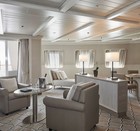
Veranda Suite. From
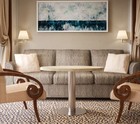
Vista Suite. From
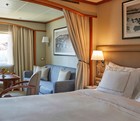
Deluxe Veranda Suite. From
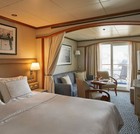
Silver Suite. From
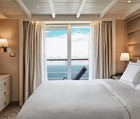
Royal Suite. From
Owner's Suite. From
Medallion Suite. From
Vessel Type: Luxury Expedition
Length: 157 m
Passenger Capacity: 200/260
Built: 1994 Refurbished & Rebranded: 2017
After extensive refurbishment, Silver Cloud will be the most spacious and comfortable ice class vessel in expedition cruising. Her large suites, her destination itineraries and her unparalleled service make her truly special. Her five dining options will tantalise your taste buds and as 80% of her suites include a veranda, watching a breaching whale or a few cavorting penguins has never been so personal. Broad sweeping decks with multiple open spaces and a swimming pool complete what is surely the most distinctive expedition ship sailing today.
A limited number of guests, particularly with just 200 in polar waters, mean that Silver Cloud has the highest space to guest and crew to guest ratios in expedition cruising. With her 18 zodiacs, possibilities are almost limitless with ship-wide simultaneous explorations. Finally, a team of 19 passionate and dedicated experts are always at hand to ensure your voyage is enhanced every step of the way.
DECK 09 - Observation Lounge, Jogging Track
DECK 08 - Pool, Pool Bar, Hot Rocks, The Panorama Lounge, The Connoisseur’s Corner
DECK 07 - La Terrazza, The Spa at Silversea, Beauty Salon, The Library
DECK 06 - Lecture Theatre, The Fitness Centre, Reception/Guest Relations, Expedition Desk
DECK 05 - The Bar, Boutique, Casino
DECK 04 - Main Restaurant, Le Champagne, Launderette







Inclusions
• Voyage on board in selected cabin category
• Butler service in every suite
• All meals on board*
• Beverages on board (Select wines, spirits and non-alcoholic beverages)
• Crew Gratuities (Excluding Spa & salon staff)
• Expedition excursions
• Lectures and entertainment on board
• Free wif-fi (Subject to coverage)
• Laundry service included for certain fare categories
• Self service laundry facilities available
• In country flights where required by the itinerary
*Some onboard restaurants incur an additional cost
• PRIVATE EXECUTIVE TRANSFERS
• INTERNATIONAL FLIGHTS - ECONOMY CLASS or Business Class upgrade at reduced rates
• AIRPORT TRANSFERS
• HOTEL
Exclusions
• International flights unless otherwise stated
• Passport and visa costs if applicable
• Travel insurance
• Optional shore excursions
• Spa and Salon Treatments
• Complete valet services, including laundry, pressing and dry cleaning, are available at an additional charge
Our Associates Include
